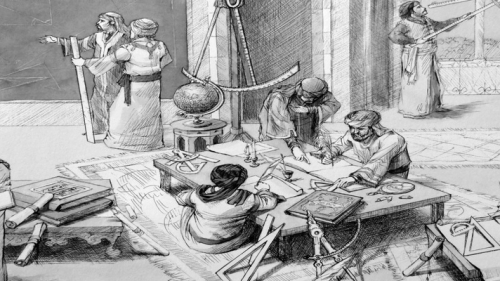India: Rocket technology and rat control

The fallout from the Surat plague caused more alarm and hysteria and sent stronger terror waves reverberating across the world than did the nuclear one from the Chernobyl disaster.
I was in Canada at that time. While people were careful about food products especially meat, milk and vegetables there was not that much panic. Even in those European countries that bordered the then Soviet Union, the element of panic was missing.
The plague in India was an altogether different story. Reports of the black death, pictures of patients lying in hospital wards too weak to move, hysteria at rail, road stations and bus stops. Images of terror stricken people fleeing the city and reports of plague cases in other parts of India created a sight that caused the most sturdy of hearts abroad to miss a beat.
The plague hit India at a time when India was steadily plodding ahead on an economic course that was supposed to usher in an era of relative prosperity. Advertisements in Indian magazines projected a nation with a middle class of about 200 million capable of buying Sony walkmans, an Apple computers, drinking Coca Cola, subscribing to STAR TV and going to the local disco for a good time. And dances all this sounded well, and please all well-wishers of the Indian people.
However, all this was brought to naught by the plague and the prime villains who caused it- the rats.
While India was happily developing and launching rocket engines and testing atomic bombs and spending billions of dollars on arms, the socioeconomic development of the country was being neglected.
While investments in heavy industry and grandiose projects went on unabated, only a trickle found its way into public health schemes and programs that would ensure the day-to-day well-being of the masses.
The rats, of course, were having a field day. Left to grow and "prosper", they overtook the human population of several cities. Encouraged by a lack of concern on the part of a government more intent on squeezing film star Sanjay Dutt and hounding hundreds under the TADA laws, the rats kept multiplying.
And in the end, they tarnished India's image.
Never before had I seen such panic as exhibited by the media- at least in the initial stages of the plague. Ports were closed to Indian vessels. India's aircraft were not allowed to land. No Indian national or foreigners coming from India was allowed to enter. Edible and non-edible goods were banned. And, there were the usual banter and jokes that callous minds take delight in when there are human tragedies.
The panic in India was deadly to the extent that even non-carriers of the plague were affected. Indian news papers reported that several people were killed by lynch mobs who thought they were affected by the disease. Roads in and out of Surat were blocked.
The plague brought in a denial also.
Kuwait authorities denied that a mouse found in a post office near a parcel from India was a "national" of the same country. It was a local mouse. In India, the "genocide of rats" began with hundreds of thousands of people across the land, armed with anything from broomsticks, cleaners, clubs, Lee-Enfields and shot guns brought down their wrath on the rodents. Since rats are nocturnal animals they needed to be flushed out at night. As a result, the sale lanterns and torch lights went up.
Not only live rats were causing alarm but even dead rats infuriated people in Bombay. Apparently, parcels of dead, smelly rats arrived at a post office causing postal workers to faint. The state government ordered district health officers to stop mailing poorly packed dead rats to laboratories for analysis.
It seemed that hundreds of flea-ridden rats were being sent to the Haffkine Institute of Epidemiological Studies for tests. It was reported that some people began mailing rats to their friends just to frighten them. That was their idea of a macabre joke. But that was not well-received either by the recipient or the post man.
The Indian press which happens to be in the forefront of free media in the world was highly critical of the government handling of the plague. The authorities moved too slow and too late and even simple instruction as to how to avoid the plague were not transmitted through the official media.
In Old Delhi and in Bombay, where millions of people live in ramshackle huts with no regular sanitation service and awash with filth, there was a clear-cut invitation for the plague. Blobs of sputum, garbage and filth strewn everywhere provided the ideal breeding ground for every kind of germ. It was in the scenario that a public relation exercises involving wives of prominent local businessmen and politicians sweeping streets was started. This was more of a publicity stunt and aimed at foreign consumption.
However, as India went after the rats, their partners in the out break of the plague- the fleas-were left almost untouched. "People should be destroying the flees instead of killing the rats," Health Secretary Dayal added his two cents worth. "If infected rats get killed, the fleas can escape and possibly bite humans"
But apparently his plea to kill a flea fell an deaf ears. In the port city of Bombay, a city of about ten million where rats outnumber people by five to one, a "rat extermination" campaign began. It failed miserably as only 7,000 rats could be killed in ten days. What is more saddening is that more than that number of people can be killed in ten days of communal riots. This proves the point that riots are more dangerous than rats.
The fear of the plague caused residents in most Indian cities to go on a killing spree. Luckily the victims this time were not fellow human beings, but rats.
Riots have halted traffic in Indian cities too often in the past. Rats did it this time. Traffic halted in the northern city of Lucknow after a dead rat was spotted on a busy road. Several students at a nearby polytechnic immediately gulped down anti-plague drugs and the lifeless rat was removed in an ambulance- a luxury hardly ever enjoyed by millions of ordinary Indians.
Even the monkeys were having a field day. In Delhi, it was reported that monkeys attacked a hospital and took away the food of patients too weak to ward them off.
The Indian plague should be a lesson for all nations -those in Asia and elsewhere. Social development is far more gainful than importing arms. India's policy makers, who inherited a hegemonistic policy from the British, should have done better by trying to up lift the masses. The focus should have been on the welfare of this nation which is endowed with enterprising men and women. While allocation for health care projects have recorded a decline over the years, defense spending soared. Between 1988 and 1992, India imported arms worth $12.2 billion. This was in addition to the money spent by the domestic arms industry.
Instead of spending money on research to combat diseases and focus on social issues, more funds were being allocated on defense research and development.
This was in keeping with the hawkish mentality of certain policy makers in the Indian establishment.
The fear of "threats" from abroad fueled this militerization drive depriving the ordinary Indian of a clean cup of water and sanitation services. Thus the garbage, the rats and the fleas, and the grand finale-the outbreak of the plague which has lost India not only millions in terms of dollars but has cracked India's image.
In Iraq, Saddam also had a similar course. In a country where all the ingredients for a sound economic growth were there, he embarked on arms buying spree and built up a huge arsenal for his hegemonistic plans for the area. In 1991 he got a well deserved lesson. His current adventure proves that he has not learned his lesson.
However, unlike Iraq which is ruled by one man with his idiosyncrasies, India is a democracy with a people and a press that know where their ultimate goals and welfare lie.
As they have embarked on a rat-eradication drive, they also should screen out those in the political circle who have hegemonistic and jingoistic qualities and bring in people whose main aim is the economic and social progress of the country.
The people of India deserve that much.

















